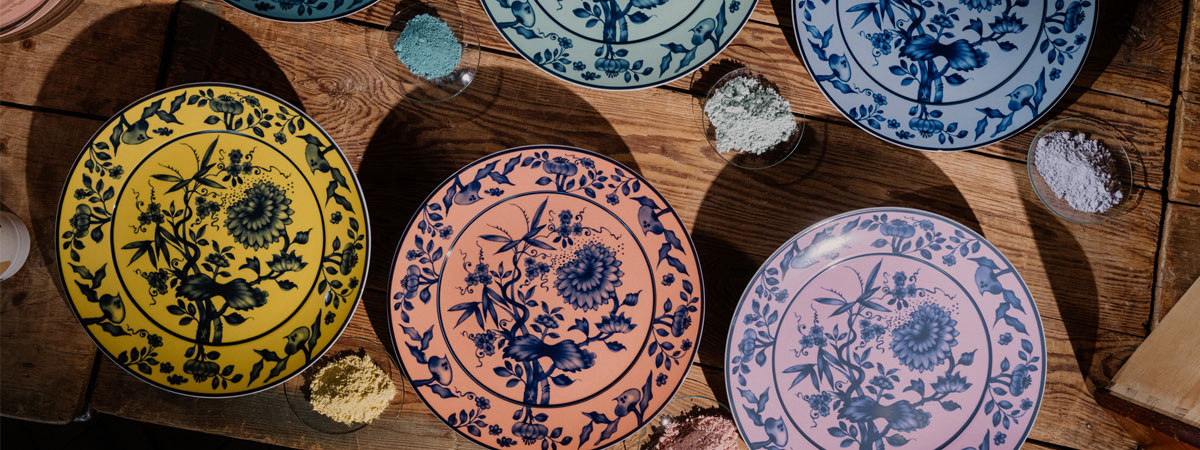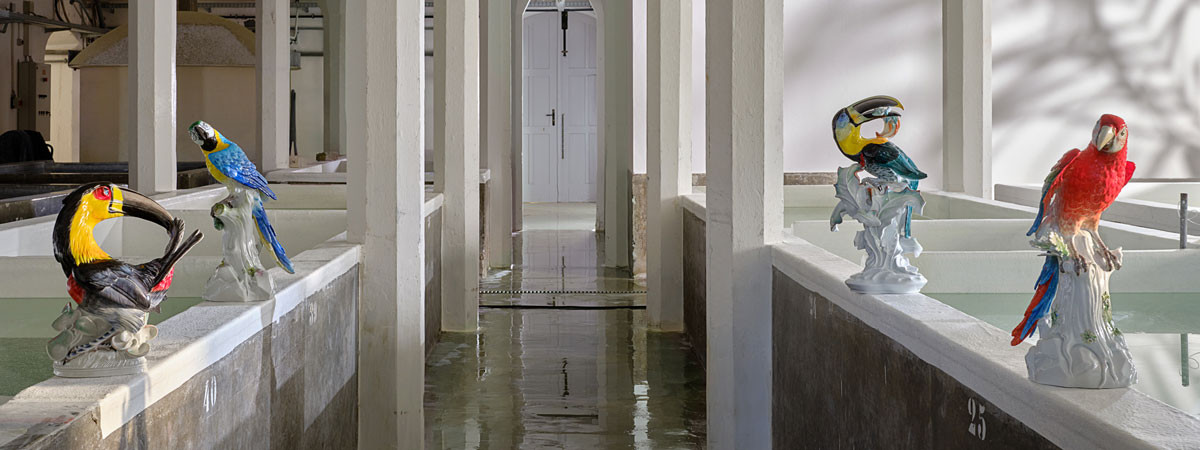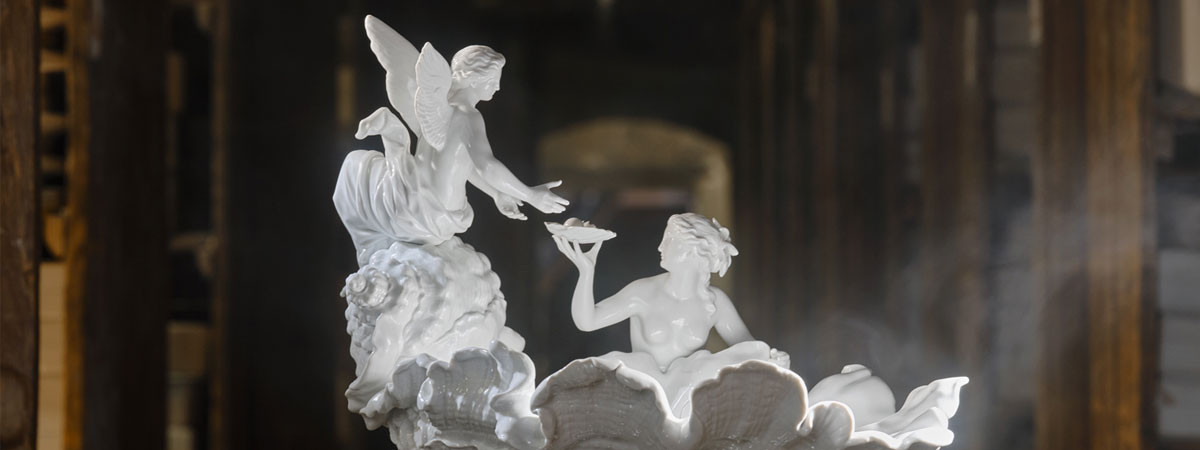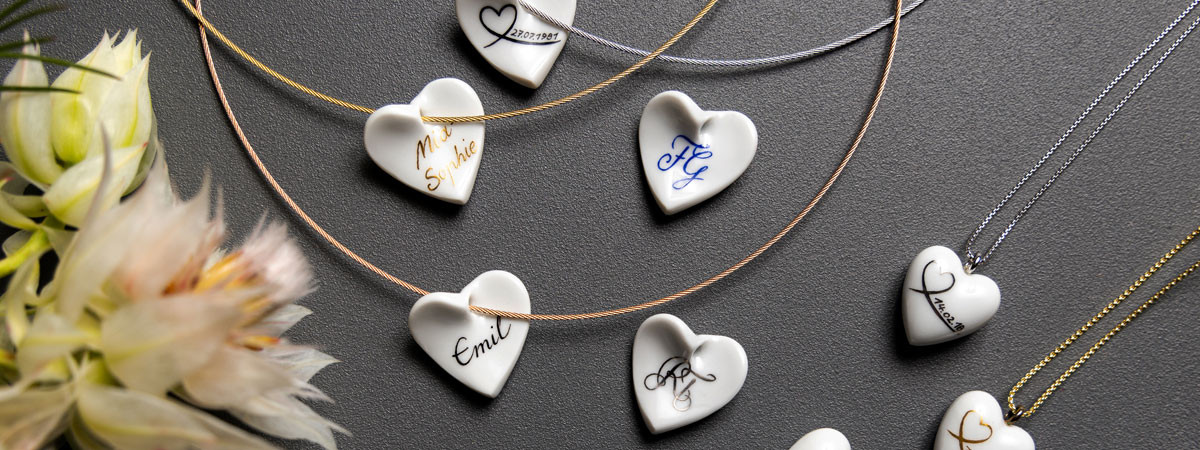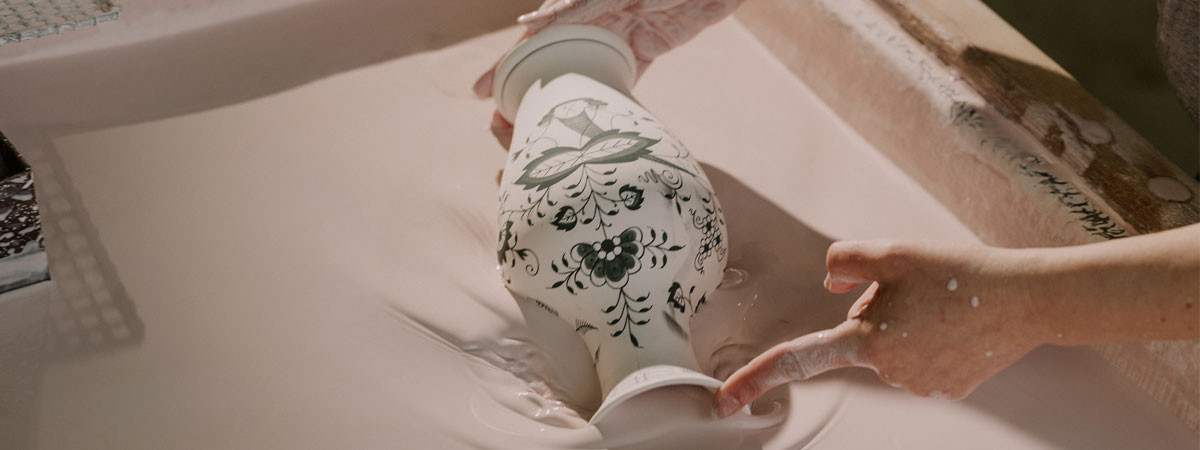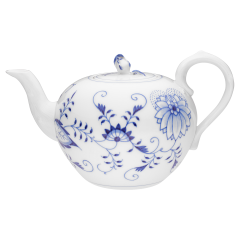ONION PATTERN
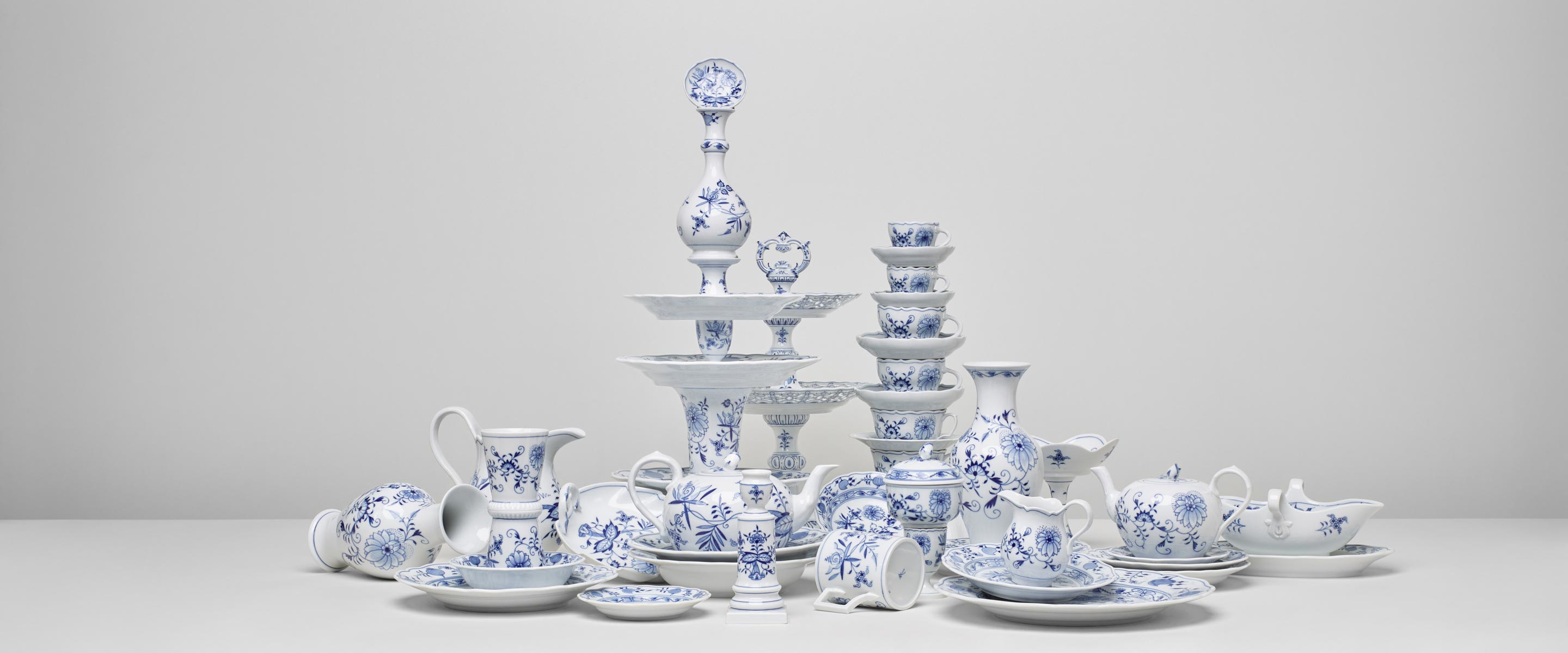
The history of the Meissen “Onion Pattern” is rooted in the development of Meissen’s blue painting technique and its particular aesthetic effect on porcelain. Immediately after the invention of the first European porcelain and the founding of the manufactory in 1710, the search for a very special blue began – a blue that would emphasize the unprecedented white of the porcelain while at the same time harmonise with it. After a number of tests, the combination of cobalt and oxygen proved to be extremely heat-resistant and optimally suited to the high firing temperatures used for Meissen porcelain. Thus, in 1722, the new paint made it possible to apply Meissen’s trademark, the Crossed Swords, in cobalt blue under the glaze for the first time. This technique protected the trademark and made it impossible to duplicate. Inspired by East Asian patterns, which were predominantly blue at the time, Meissen’s radiant blue “Onion Pattern” was created from 1731 and would go on to become famous around the world. The “onions” in the pattern are not in fact onions, but rather peaches and melons on the rim of the plate, and bamboo stalks and delicate chrysanthemum blossoms adorning the centre. In lieu of exotic fruits and flowers to use as templates for their creations, Meissen’s 18th-century artisans’ stylized renditions soon gave rise to their misconception as onions. The term “Onion Pattern”, which is still used today, was given to the design by the general public.
-
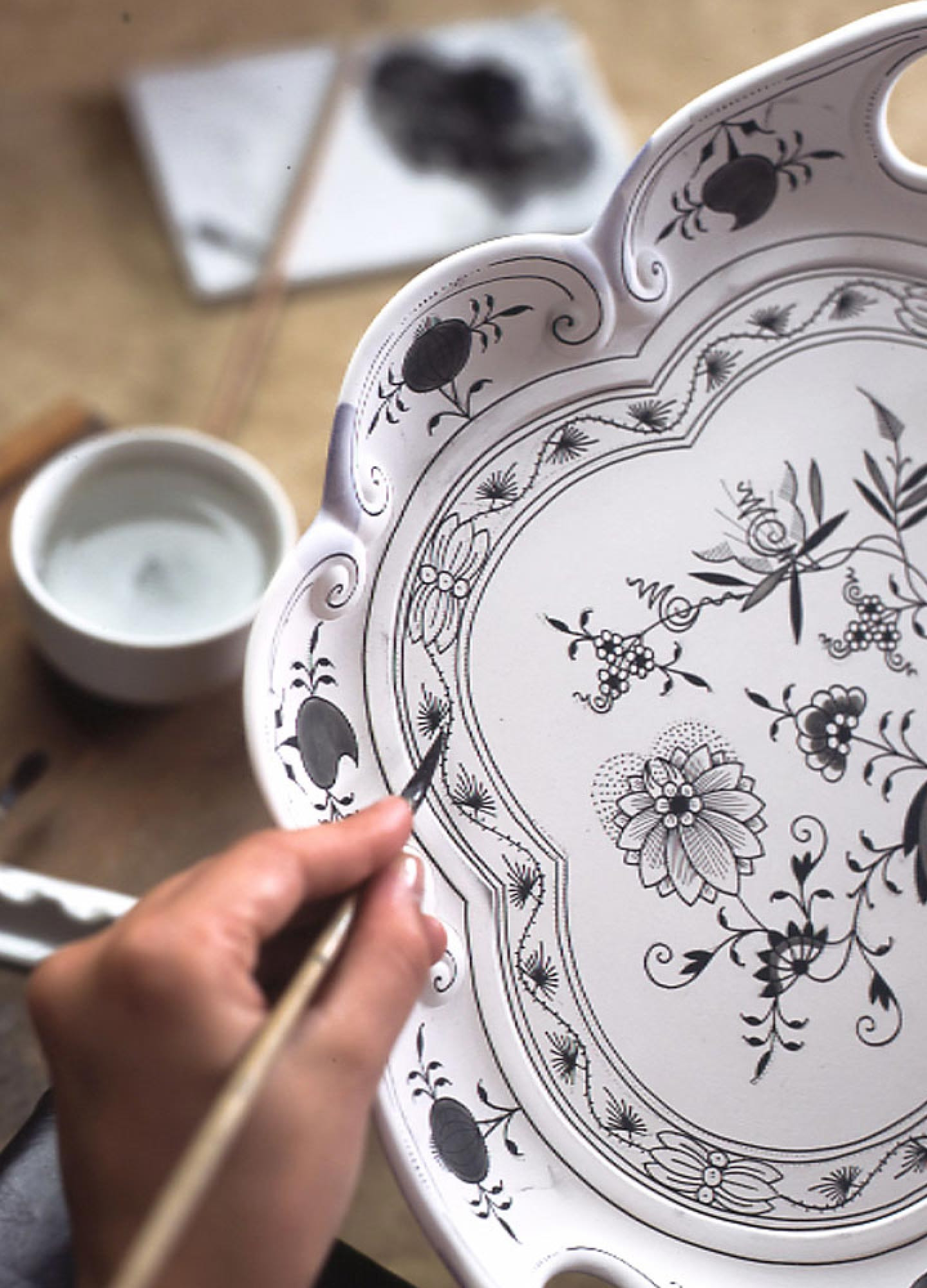 HistoryDuring the Baroque period, chinoiserie becomes all the rage in Europe – a development that can be traced back, in part, to the fascination for Chinese porcelain. The Elector of Saxony was particularly fond of blue-painted porcelain and demanded commensurate pieces from his manufactory. His demands were the impetus for the manufactory’s deep connection with cobalt blue under-glaze painting. Johann Friedrich Böttger was already attempting to produce an under-glaze blue paint in 1708, the same year that the first European porcelain was invented. The formula was tweaked for years by experimenting with the composition of cobalt blue, different liquids, glazes, and other masses, as well as various firing temperatures and firing atmosphere, until finally, in 1739, Meissen had perfected the art of blue under-glaze painting.
HistoryDuring the Baroque period, chinoiserie becomes all the rage in Europe – a development that can be traced back, in part, to the fascination for Chinese porcelain. The Elector of Saxony was particularly fond of blue-painted porcelain and demanded commensurate pieces from his manufactory. His demands were the impetus for the manufactory’s deep connection with cobalt blue under-glaze painting. Johann Friedrich Böttger was already attempting to produce an under-glaze blue paint in 1708, the same year that the first European porcelain was invented. The formula was tweaked for years by experimenting with the composition of cobalt blue, different liquids, glazes, and other masses, as well as various firing temperatures and firing atmosphere, until finally, in 1739, Meissen had perfected the art of blue under-glaze painting.
“Deeply rooted in the development of Meissen’s blue painting technique, the ‘Onion Pattern’ is an expression of the genius and inventive spirit of Europe’s oldest porcelain manufactory.”
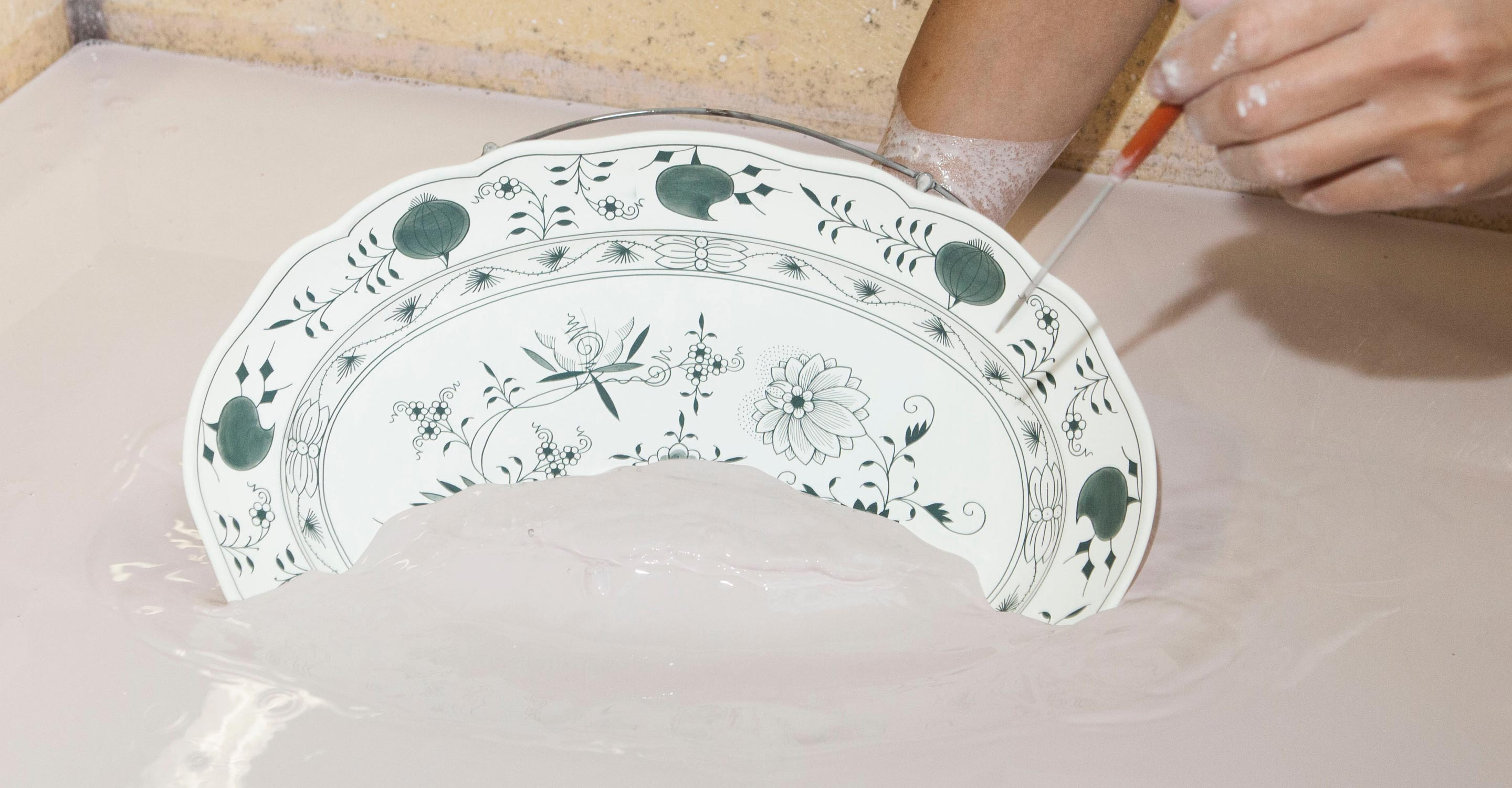
With fine brushstrokes and extreme care, the under-glaze painter applies the paint on the fired biscuit. This immediately penetrates the still-porous material, which means corrections are impossible. The design first appears in a dull grey; it is only after glazing and firing that the paint takes on its signature brilliant blue hue.
-
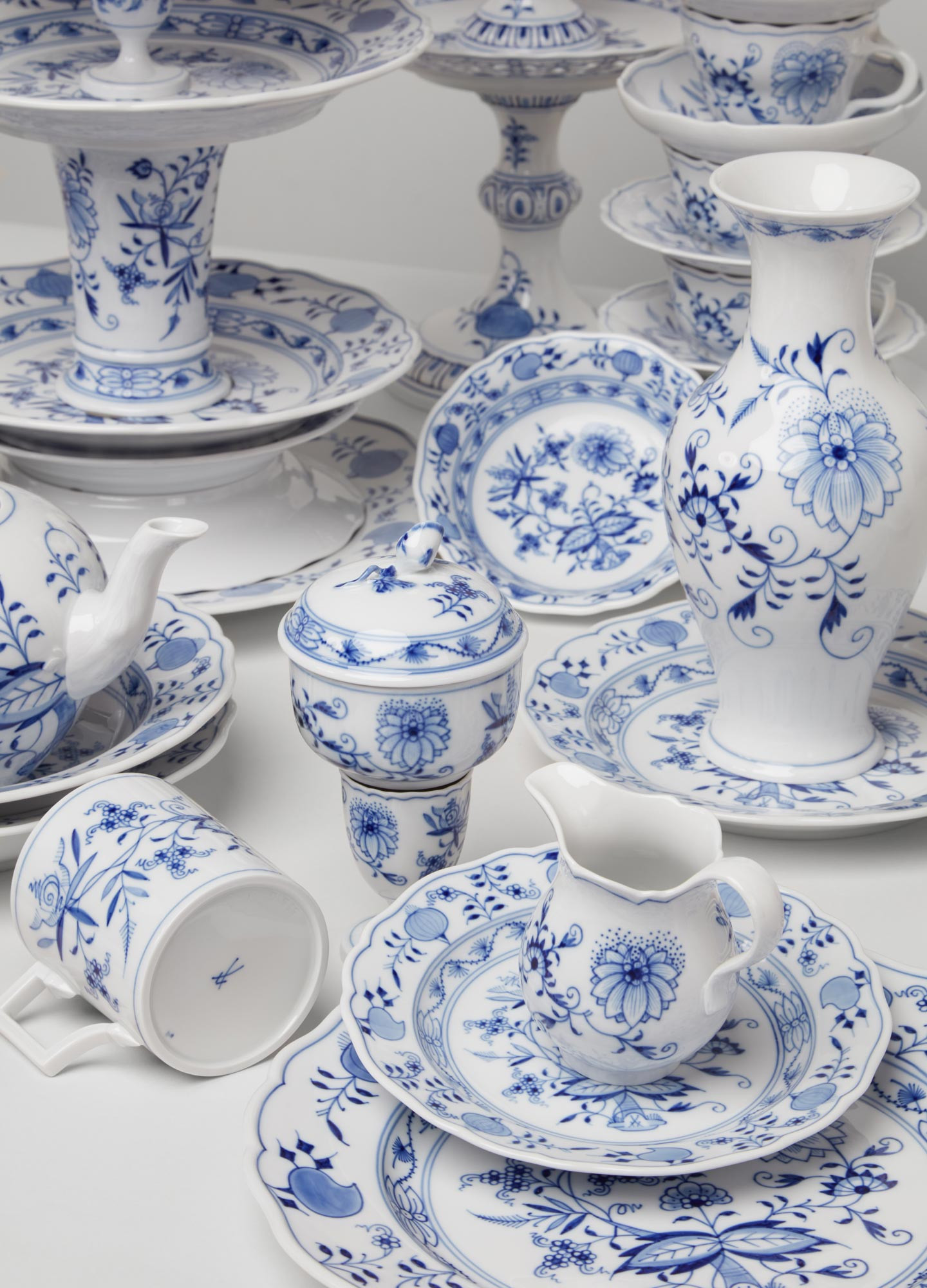 CraftsmanshipAs the oldest trademark in Europe, the Crossed Swords from the coat of arms of the Electorate of Saxony have represented the exceptional quality of Meissen porcelain since 1722. To this day, the trademark is applied by hand to every piece of Meissen porcelain in the manufactory’s own cobalt blue by Meissen’s “swordsmen” – painters specialising in the Crossed Swords. The Crossed Swords have been a component of the onion pattern since 1888. Set in the foot of the bamboo stalks, the swords attest to the piece’s authenticity and guarantee Meissen’s exceptional porcelain quality and craftsmanship.
CraftsmanshipAs the oldest trademark in Europe, the Crossed Swords from the coat of arms of the Electorate of Saxony have represented the exceptional quality of Meissen porcelain since 1722. To this day, the trademark is applied by hand to every piece of Meissen porcelain in the manufactory’s own cobalt blue by Meissen’s “swordsmen” – painters specialising in the Crossed Swords. The Crossed Swords have been a component of the onion pattern since 1888. Set in the foot of the bamboo stalks, the swords attest to the piece’s authenticity and guarantee Meissen’s exceptional porcelain quality and craftsmanship. -
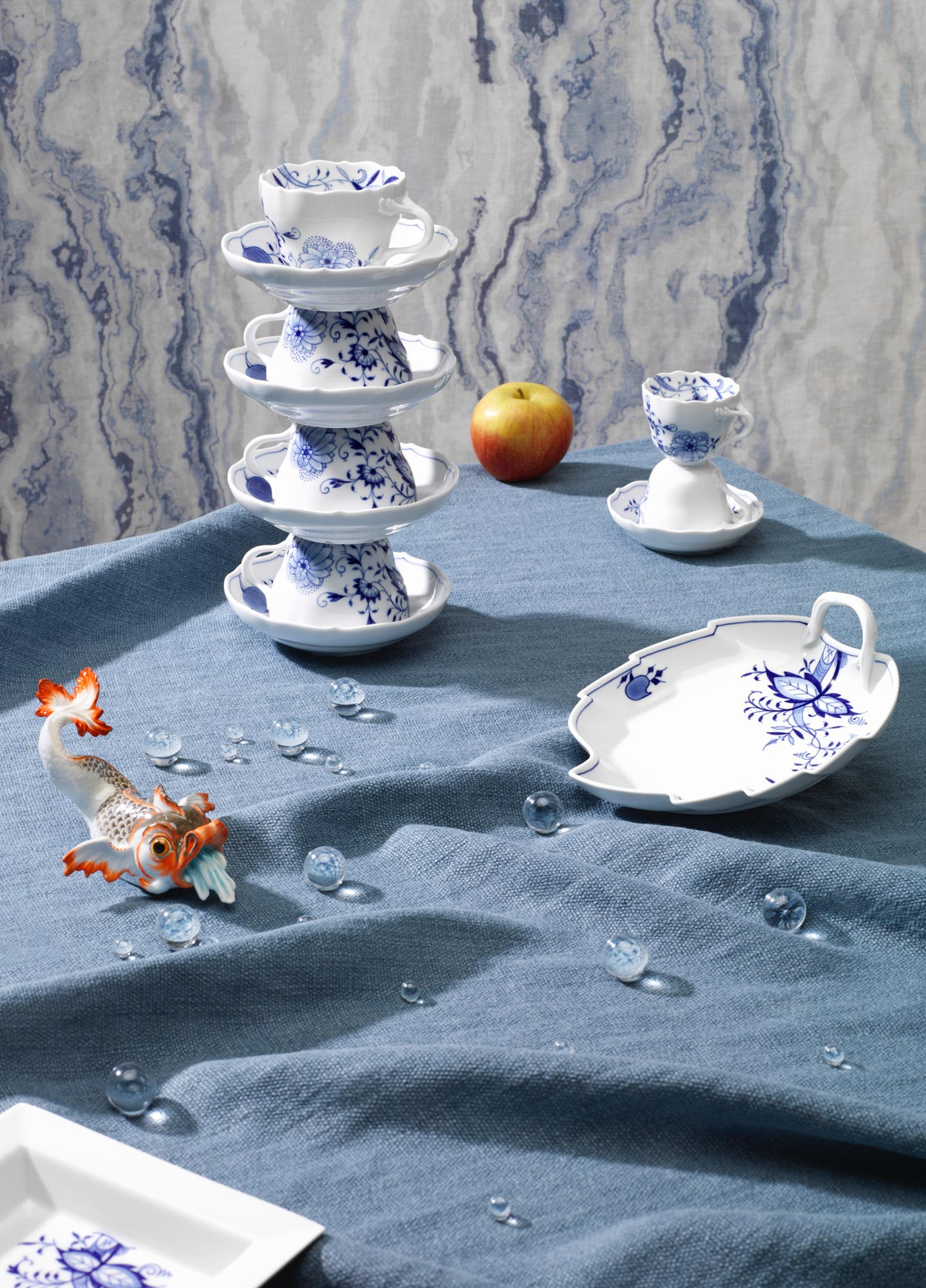 Onion pattern styleIn 2004, Meissen’s historic “Onion Pattern” received a contemporary makeover, for which the intricate full-plate pattern was reduced to reveal a chrysanthemum winding along the plate’s rim. The vined bamboo shoot with delicate blossoms and leaves, along with the original pattern’s double leaf have remained, while the fruits have disappeared altogether. The new pattern presents itself as a lighter, breezier offshoot of the 1731 original, allowing the porcelain’s lustre to shine. On cups, both chrysanthemum and vined bamboo have struck roots in a similarly reduced, less compact artwork – making it seem as though the bamboo were growing straight from the cup. The fruits here have also disappeared, while an “onion” on the saucer harkens back to its historic inspiration.
Onion pattern styleIn 2004, Meissen’s historic “Onion Pattern” received a contemporary makeover, for which the intricate full-plate pattern was reduced to reveal a chrysanthemum winding along the plate’s rim. The vined bamboo shoot with delicate blossoms and leaves, along with the original pattern’s double leaf have remained, while the fruits have disappeared altogether. The new pattern presents itself as a lighter, breezier offshoot of the 1731 original, allowing the porcelain’s lustre to shine. On cups, both chrysanthemum and vined bamboo have struck roots in a similarly reduced, less compact artwork – making it seem as though the bamboo were growing straight from the cup. The fruits here have also disappeared, while an “onion” on the saucer harkens back to its historic inspiration.

Noble Blue
In “Noble Blue”, the historical “Onion Pattern” takes on a modern guise, contrasting the opulence of its precursor with modern esprit and accents in red and gold

